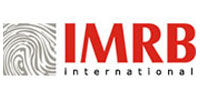
42% of internet users in India use local language for accessing content: IMRB

 As of last year, 42 per cent (about 45 million) of the total number of internet users in India were using local language for accessing content, according to a report by market research firm IMRB.
As of last year, 42 per cent (about 45 million) of the total number of internet users in India were using local language for accessing content, according to a report by market research firm IMRB.
"Users are more likely to be engaged on the internet if the content is provided in the language they most associate with," said Tarun Abhichandani, group business director, IMRB.
There is significant growth in mobile internet usage statistics, already numbered at 238 million out of which more than 50 per cent are first time users. Smartphone users are also on a rise, making for a clear case to provide these regional language literate users with an experience comparable to English language experience on their phones and other digital devices.

Startups in the space
"There is tremendous potential of developing technology which can benefit nearly 65 per cent of India's population that is not English literate," shared Arvind Pani, co-founder and CEO, Reverie Language Technologies which makes text communication possible in more than 50 languages.
"Consumers are more receptive to the content provided in vernacular languages," added Surjeet Singh, VP marketing and business development of Raftaar.in, which provides users with information in various categories like entertainment, religion, news, sports and astrology etc. in vernacular languages.

Vserv.mobi, a mobile advertising exchange has also introduced an 'Appification initiative' whereby the company is appifying and enabling monetisation for over 100 publications in multiple languages across categories like women, technology, health, media, news and sports, among others.
"With India being a linguistically diverse nation, there is a huge opportunity among content creators to make themselves relevant to non-English natives and consumers who desire local content. Aligning to this, we have observed that publishers are leapfrogging to the mobile platform whereas mobile developers are increasingly creating multilingual apps to meet this demand," shared Prashant Dixit, director of global business development, Vserv.mobi.
Addressing the challenges

"Dearth of local language content and a distinct gap in quality and usability in Hindi and other language websites results in a disjointed user experience. Brands hoping to capitalise on this market potential need to support the development of the user experience and needs of the vernacular internet user," Abhichandani mentioned.
Lack of government policies, ambiguity surrounding Indian fonts and input methods were few of the challenges pointed out by Pani, who feels that there is a need to have a holistic approach to solve the problem. "Addressing each of these problems in isolation is never going to address the problem of consumer experience," he said.
There is a need for relevant and quality local language online content, translation and user interface technology, as well as mobile services to further grow the vernacular services industry.

